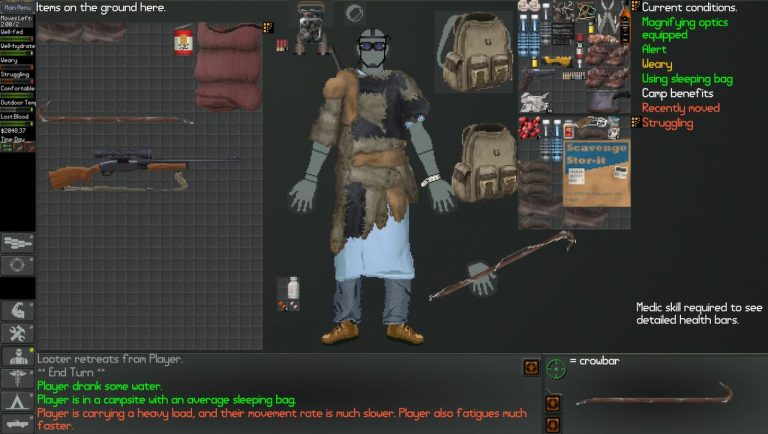The Konami code is one of those Easter eggs that has long since travelled outside of its origins. It first appeared in the seminal shooter Gradius in 1986, but came to prominence in the west thanks to the NES release of Contra (it is sometimes called “the Contra code”), and basically gives the players bonuses depending on the game: in Gradius you got all the power-ups, in Contra you got 30 lives.
Funnily enough, the code was intended as a debug tool, but someone forgot to remove it and, with Gradius in the latter stages of production, the decision was made to just leave it be. Konami’s developers, recognising it was hard to input accidentally but easy if you knew the secret, adopted it as something of a trademark and began including bonuses in many of its games based on the code (usually on the title screen).
The code became so ubiquitous that any new Konami game was immediately Konami-coded to oblivion by players, and it’s not the most complex Easter egg, so there’s been a widespread assumption that every possible use of the Konami code had been found. Not so. Two dedicated Castelvania 64 players, Moises and LiquidCat, have discovered an example that’s remained hidden in Castlevania: Legacy of Darkness for 25 years (their finding was subsequently brought to wider notice by YouTuber JupiterClimb and The Gamer.)
Castlevania: Legacy of Darkness was a quickfire ‘Director’s Cut’ of the much-maligned Castlevania 64, Konami’s first attempt to translate the 2D side-scrolling series into 3D. Castlevania 64 was infamously a technical mess but, even outside of that, simply a terrible game: even at the time it got absolutely monstered by critics and players alike. Legacy of Darkness was hastily developed and released within a year, improving the technical performance (somewhat), adding new levels and narrative beats, more playable characters, and remixing the original’s locations.
I wouldn’t say Legacy of Darkness is a lost classic, exactly, but it’s much better than Castlevania 64. Some of its additions are unlocked through multiple completions of the game, and herein lies the newly discovered use for the Konami code. On the Legacy of Darkness title screen, the Konami code can be used to unlock all four of the game’s characters and their outfit variants, as well as the game’s hard mode.
The reason no-one had discovered this (or at least made it known)? Firstly the inputs are not, as usual, made with the d-pad or analogue stick. The Nintendo 64 controller had two main face buttons, A and B, but then four C buttons marked with directional arrows. In this example, the Konami code is not triggered by its usual form: which would be up up, down down, left right, left right, then A+B (sometimes followed by the Start or Select button).
Instead, and for whatever reason, the developers doubled every input. So the Konami code for Legacy of Darkness is: C-up x4, C-down x 4, C-left x 2, C-right x 2, C-left x 2, C-right x2, and then pressing the N64 pad’s L+R shoulder buttons alongside pulling the Z-trigger. Put like that, you can see why even people trying out the Konami code everywhere on this game hadn’t found it till now.
This unlocks the characters, outfits, and hard mode, as previously mentioned, but amazingly there are even more variants. Inputting the first part of the code with the C buttons and then altering the ending combination can be used to max out your character’s inventory, though there are differences between the regional versions of the game: the US version of the cart requires that players somehow press L+R and all C buttons and Z at the same time; the European and Japanese versions require you to contort with L+R, D-pad up / right, C buttons up / right, and Z. Two more codes work on all regions: obtain 99 jewels by making the latter half all C buttons plus Z; or get max level power-ups and subweapons by ending it with L+R, D-pad down / left, C button down / left, and Z.
The hand contortions that some of these require suggest that, appropriately enough, they were intended more as debug tools than a variant of the Konami code players were expected to discover. It’s nevertheless surprising they stayed buried so long, especially in a game that has since had its own afterlife thanks to a modding and speedrunning community (in fact, Moises made the discovery while looking through the game’s code).
The creator of the Konami code was Kazuhisa Hashimoto, who died in 2020. Hashimoto developed the NES port of Gradius and, finding the game too difficult to play through during testing, added the code so he could blast through the stages more easily—then forgot to remove it. In this case, Hashimoto’s oversight created greatness, and the Konami code has subsequently been used as an Easter egg by tech companies like Google, Facebook, Twitter, and Twitch. Such is its ubiquity, there’s even one on the Bank of Canada website. So to find an example, albeit a variant, in a Konami game after a quarter of a century… well, it does make you wonder what else might be squirrelled away out there.












